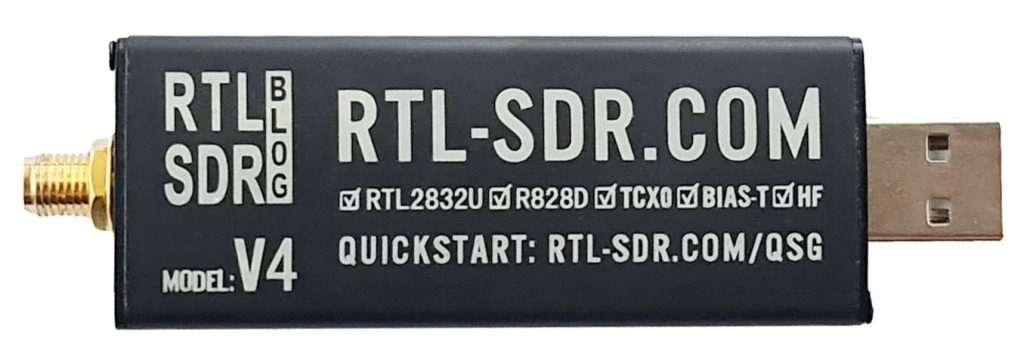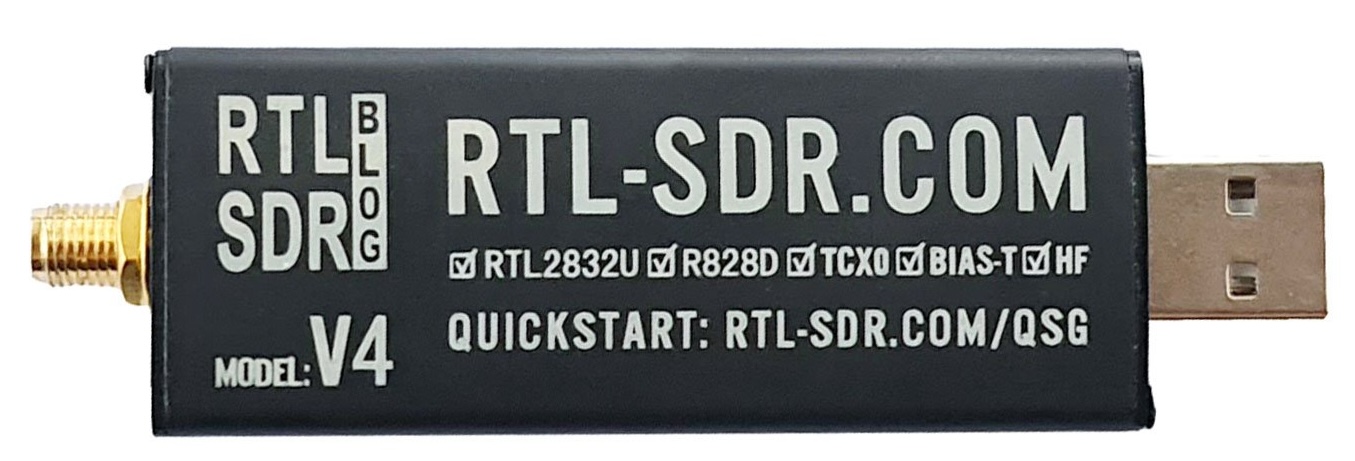
Release info from RTL-SDR.com (https://www.rtl-sdr.com/rtl-sdr-blog-v4-dongle-initial-release/):
The V4 comes with several improvements and changes that are listed below.
- Improved HF Reception. Now uses a built in upconverter instead of using a direct sampling circuit. This means no more Nyquist folding of signals around 14.4 MHz, improved sensitivity, and adjustable gain on HF. Like the V3, the lower tuning range remains at 500 kHz and very strong reception may still require front end attenuation/filtering.
- Improved filtering. The V4 makes use of the R828D tuner chip, which has three inputs. We triplex the SMA input into three bands, HF, VHF and UHF. This provides some isolation between the three bands, meaning out of band interference from strong broadcast stations is less likely to cause desensitization or imaging.
- Improved Filtering x2. In addition to the triplexing, we are also making use of the open drain pin on the R828D, which allows us to add simple notch filters for common interference bands such as broadcast AM, broadcast FM and the DAB bands. These only attenuate by a few dB, but may still help.
- Improved phase noise on strong signals. Due to an improved power supply design, phase noise from power supply noise has been significantly reduced.
- Less heat. Due to the improved power supply design the V4 uses slightly less current and generates slightly less heat compared to the V3.
- Cheaper price! The price of the R860 chip which is used in the V3 and most other RTL-SDR brands increased significantly at the beginning of 2023 which is part of the reason as to why RTL-SDR dongles have been increasing in price recently. For the V4 we are making use of an existing stockpile of R828D chips which are now priced cheaper than new productions of the R860. In a time when high inflation keeps pushing prices up this is incredibly welcome.
There are some other minor changes including a new bias tee LED and a small cutout hole in the enclosure so it’s easy to tell when the bias tee is on.
Of course the same innovations that we brought in with the V3 are still implemented such as the sleek conductive black metal enclosure which works as a shield and doubles as a heatsink, a thermal pad to sink heat away from the PCB, 1PPM TCXO, SMA connector, USB noise choking and improved ESD protection.
The V4 however does come with some disadvantages compared to the V3 that need to be noted:
- Due to the increased filtering there can be an average of 2-3 dB less sensitivity on some bands. Please see the MDS measurement graph below for the full picture.
- The V4 requires the use of our RTL-SDR Blog drivers. Our RTL-SDR blog drivers are on GitHub. Please be sure to follow the installation instructions on the quickstart guide carefully. In most cases using our drivers simply means running our install-rtlsdr-blog.bat file, or replacing a dll file. (UPDATE: The default Osmocom branch now supports the RTL-SDR Blog V4, as does most other software)
- The V4 is a Limited Edition Design. The R828D tuner chip is completely out of production now and the number of units we can produce is limited by the number of chips held by our contract manufacturer in China. They have indicated that there should be enough stockpile for about a years worth of production. (UPDATE: We have sourced more chips and should be able to continue production at least well into 2025)
Because of these tradeoffs we will continue selling the V3 alongside the V4.
As you can see the new RTL-SDR 4 is great but you must remember to install the new drivers. To install do the following:
- Purge the previous driver:
sudo apt purge ^librtlsdr sudo rm -rvf /usr/lib/librtlsdr* /usr/include/rtl-sdr* /usr/local/lib/librtlsdr* /usr/local/include/rtl-sdr* /usr/local/include/rtl_* /usr/local/bin/rtl_* - Install the RTL-SDR Blog drivers:
sudo apt-get install libusb-1.0-0-dev git cmake pkg-config git clone https://github.com/rtlsdrblog/rtl-sdr-blog cd rtl-sdr-blog mkdir build cd build cmake ../ -DINSTALL_UDEV_RULES=ON make sudo make install sudo cp ../rtl-sdr.rules /etc/udev/rules.d/ sudo ldconfig - Blacklist the DVB-T TV drivers.
echo ‘blacklist dvb_usb_rtl28xxu’ | sudo tee –append /etc/modprobe.d/blacklist-dvb_usb_rtl28xxu.conf - Reboot
This goes for all the RTL-SDRs to turn on the bias-t
cd ~
git clone https://github.com/rtlsdrblog/rtl_biast
cd rtl_biast
mkdir build
cd build
cmake .. -DDETACH_KERNEL_DRIVER=ON
make
To test: sudo service dump1090-fa stop && cd ~/rtl_biast/build/src && ./rtl_biast -b 1 && sudo service dump1090-fa start
Ideally we don't want to have to reactivate the bias tee manually every time the Raspberry Pi reboots. To make it automatic use the following instructions:
sudo mkdir /etc/systemd/system/dump1090-fa.service.d sudo
nano /etc/systemd/system/dump1090-fa.service.d/bias-t.conf
Then paste in the following:
[Service] ExecStartPre=/home/pi/rtl_biast/build/src/rtl_biast -b 1
